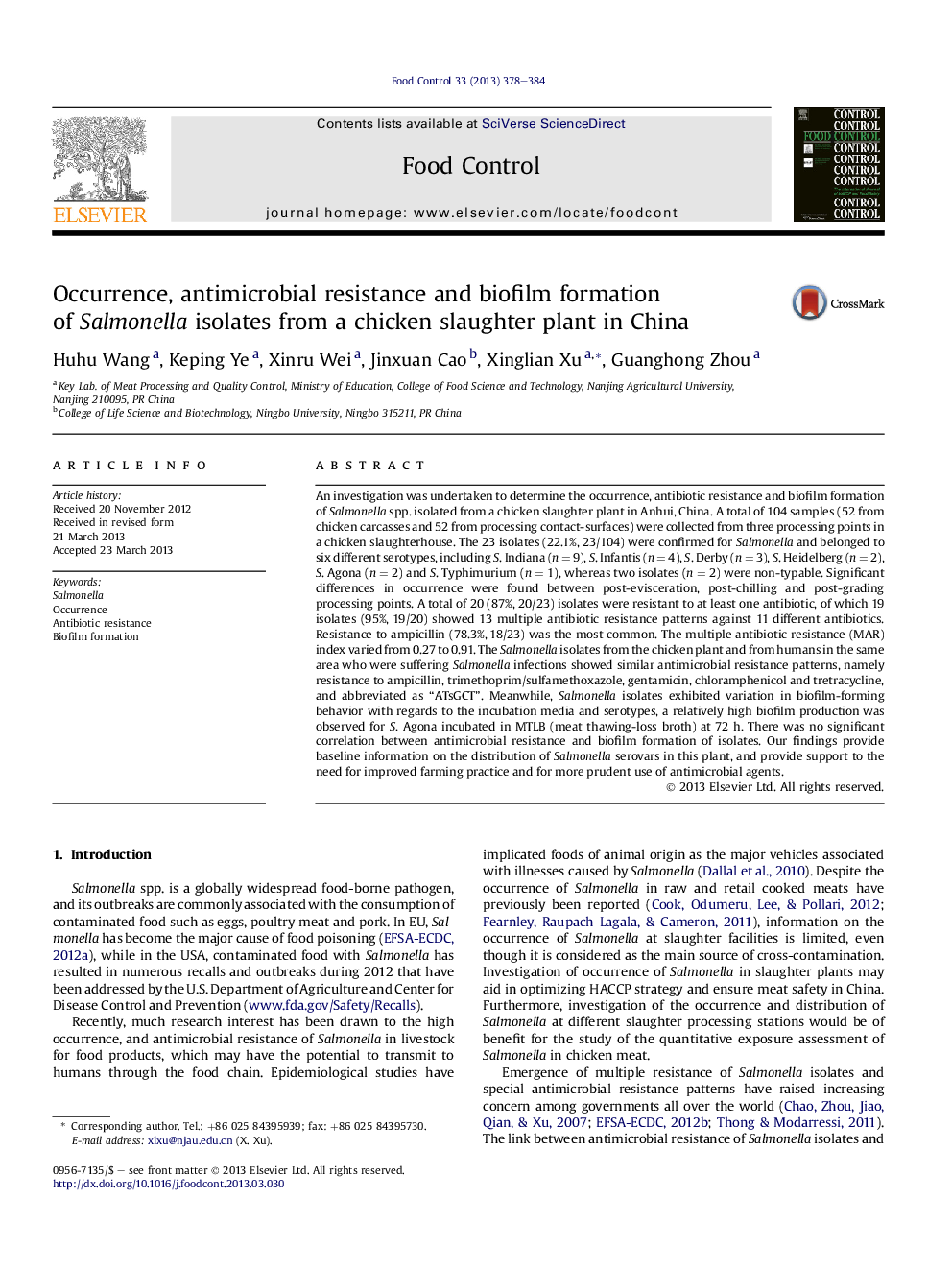| Article ID | Journal | Published Year | Pages | File Type |
|---|---|---|---|---|
| 6392851 | Food Control | 2013 | 7 Pages |
Abstract
An investigation was undertaken to determine the occurrence, antibiotic resistance and biofilm formation of Salmonella spp. isolated from a chicken slaughter plant in Anhui, China. A total of 104 samples (52 from chicken carcasses and 52 from processing contact-surfaces) were collected from three processing points in a chicken slaughterhouse. The 23 isolates (22.1%, 23/104) were confirmed for Salmonella and belonged to six different serotypes, including S. Indiana (n = 9), S. Infantis (n = 4), S. Derby (n = 3), S. Heidelberg (n = 2), S. Agona (n = 2) and S. Typhimurium (n = 1), whereas two isolates (n = 2) were non-typable. Significant differences in occurrence were found between post-evisceration, post-chilling and post-grading processing points. A total of 20 (87%, 20/23) isolates were resistant to at least one antibiotic, of which 19 isolates (95%, 19/20) showed 13 multiple antibiotic resistance patterns against 11 different antibiotics. Resistance to ampicillin (78.3%, 18/23) was the most common. The multiple antibiotic resistance (MAR) index varied from 0.27 to 0.91. The Salmonella isolates from the chicken plant and from humans in the same area who were suffering Salmonella infections showed similar antimicrobial resistance patterns, namely resistance to ampicillin, trimethoprim/sulfamethoxazole, gentamicin, chloramphenicol and tretracycline, and abbreviated as “ATsGCT”. Meanwhile, Salmonella isolates exhibited variation in biofilm-forming behavior with regards to the incubation media and serotypes, a relatively high biofilm production was observed for S. Agona incubated in MTLB (meat thawing-loss broth) at 72 h. There was no significant correlation between antimicrobial resistance and biofilm formation of isolates. Our findings provide baseline information on the distribution of Salmonella serovars in this plant, and provide support to the need for improved farming practice and for more prudent use of antimicrobial agents.
Related Topics
Life Sciences
Agricultural and Biological Sciences
Food Science
Authors
Huhu Wang, Keping Ye, Xinru Wei, Jinxuan Cao, Xinglian Xu, Guanghong Zhou,
